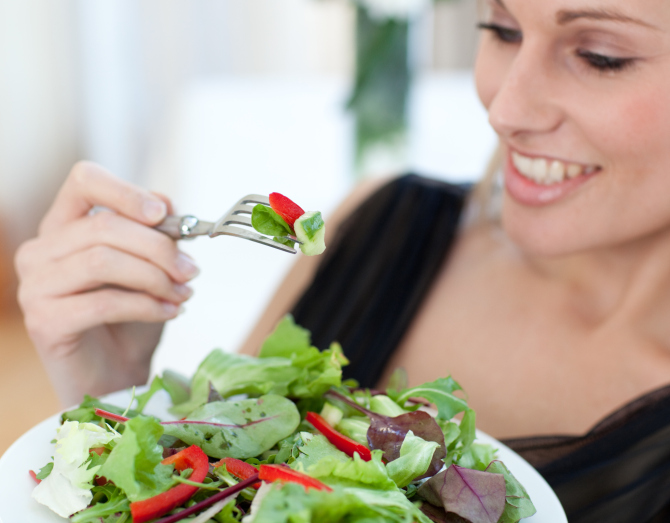Going Green: How to Make Your Plate Sustainable

There are a lot of reasons why we eat, only one of which is hunger. We eat for pleasure, flavor, we break bread with friends and family, we eat for comfort as well as nutrition and health.
But lately, there’s been a new reason we eat what we eat. A lot of people are “going green” with their menus, buying food that is sustainable, local or organic.
People who are “eating greener” include those who grow their own food and compost all their waste, to those who simply take a re-usable bag to the grocery store. We’re all interested in making decisions that are better for the environment. If you want to step up your efforts toward environmental food decisions, here are a few tips to consider.
Eat Fresh Produce in Season
If you’re fortunate enough to live in a state with lots of farms like we are in California, then you have access to fresh fruits and vegetables all year-round. Eating in-season, local produce ensures that your food has traveled fewer miles to get to you, which means it’s fresher, too. One way to ensure you’re getting in-season produce is to visit your nearest Farmers’ Market; you’ll also feel good about supporting local farmers. With almost 800 farmers’ markets in California, there’s likely one near you. Don’t live in California, or there isn’t a nearby Farmer’s Market? Here is a list of seasonal fruits and vegetables you can buy from your local grocery store.
Cook at Home
Eating at home will save you gas to get to a restaurant and money on the tab. You’ll also be doing yourself some good. Cooking your own foods allows you to have more control over the ingredients, likely reducing the calories and salt you eat and ensuring that you’re eating a more nutritious meal1.
Reduce Food Waste
The EPA reports that in 2010, Americans generated 34 million tons of food waste, that is 40 percent of our food mostly in our homes2. Reducing your own food waste will save you money and help out the local landfill. Plan your meals so you cook the food you purchased. To do this, make sure you rotate the oldest food to the front of the refrigerator, or you may want to use some frozen foods to minimize waste. Keep your refrigerator and freezer set at the proper temperature. Cleaning refrigerator coils based on the manufacturer’s recommendations reduces energy costs. If you want to be even “greener”, try composting in your back yard. Don’t have a back yard? There are plenty of in-home composting options available.
Ditch Overly-Packaged Food
You know what an apple doesn’t have? A wrapper. An easy way to go green with your food is to ditch packaged products, which will reduce the packaging waste. You’ll likely find yourself eating better, too.
Grow Your Own Food
A little vegetable plot in your back yard can provide a lot of vegetables and fruits. With a backyard garden, you can hit all the high points of personal environmentalism: your veggies will be organic, unprocessed and they’ll have traveled zero miles to get to you. You can even compost any waste and turn it back into the soil.
Eat a Balanced Diet in the Right Amounts
Remember to eat for your health by eating right-sized, balanced meals from all five food groups. Your waist and your wallet will thank you, and if we all pitched in, we’d consume less food overall, leaving more resources for the planet.
Should I Buy Organic?
Organic farming doesn’t include the use of pesticides, herbicides or synthetic fertilizers. Since organic food has become more popular, much of it is grown by large scale producers and may have similar food miles and water/soil conservation practices as conventional agriculture. Organic foods can be more expensive, and it really comes down to a personal choice whether to buy them or not.
Both conventional and organic milk, fruits and vegetables provide the same nutrient value. If organic is a little too pricey, don’t skip healthy foods altogether; feel confident that the conventional option is just as nourishing. Also, an organic label does not necessarily make the food healthy.
Ultimately, how green you go is up to you. There are a lot of easy things you can do to help the planet by adjusting your plate. The best part? Most of the changes you make will benefit your own health immediately.
[“source-ndtv”]


